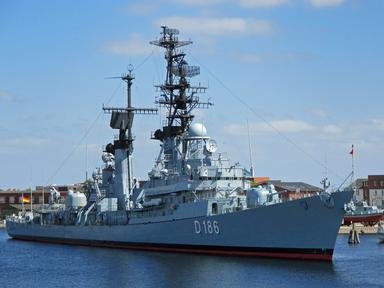Quiz Answer Key and Fun Facts
1. This class of British battlecruisers were some of the largest ships ever built for the Royal Navy. Only one of the four ships planned was completed, just after the end of WW1, and she served into the Second World War. Can you name her?
2. This next class of battlecruiser was authorized by the Royal Navy in 1919. Due to the cost and the restrictions of the Washington Naval Treaty of 1922, none of the G-3 class were ever laid down. How many ships were authorized?
3. The Austro-Hungarian Navy designed three different classes of battlecruiser between 1915 and 1917. How many of these ships were ever completed?
4. Between the years 1914-1945, how many battlecruisers were built by the French Navy?
5. The Japanese Navy laid down four "Amagi" class battlecruisers in 1920. How many of these were completed as designed?
6. The first American battlecruiser class were the Lexingtons of 1916. The design was changed several times, and the ships weren't laid down until 1920. How many ships were planned?
7. Which European country designed the Mackensen class battlecruisers in 1915?
8. The last battlecruisers designed for the Imperial German Navy were the "Ersatz Yorck" class of 1916. How many ships were in this class?
9. The Russian Navy designed a class of four battlecruisers in 1912. How many of these ships were completed?
10. Nazi Germany planned a battlecruiser class as part of the "Z" fleet rebuilding plan. Known as the "O" class, they were authorized in 1937, but cancelled in 1939. Why were the ships cancelled?
11. The Japanese Navy designed a battlecruiser class in 1939, rumors of which inspired the Americans to create the Alaska class "large cruisers". How many of these ships did the Japanese plan to build?
12. The Netherlands, worried about Japanese designs on their colonies in the Pacific, designed a class of battlecruisers in 1940. Where were the ships to be built?
13. The Soviet Union laid down two battlecruisers in 1939, but neither one was ever completed. What became of them?
14. Another Soviet battlecruiser design was the "Stalingrad" class of 1941, which were also delayed by World War II and the inefficiency of Soviet shipyards. Do you know how many of these ships were planned?
15. The only American battlecruisers ever completed were the two ships of the Alaska class in 1944. How many ships were originally planned for this class?
Source: Author
Reamar42
This quiz was reviewed by FunTrivia editor
stedman before going online.
Any errors found in FunTrivia content are routinely corrected through our feedback system.
